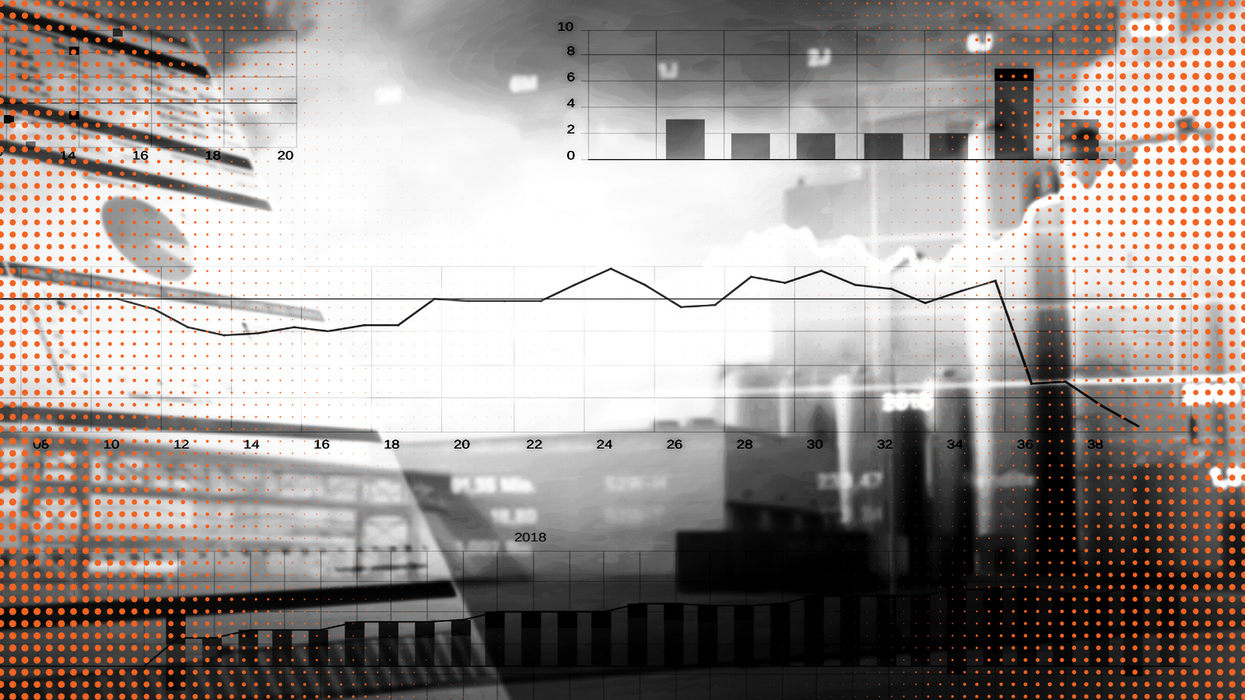Economy
01 February 2023
Consumers send mixed signals as confidence declines in January
The Conference Board found that consumer views of the current economic situation is improving, but they aren't as optimistic about the next six months.

The Conference Board found that consumer views of the current economic situation is improving, but they aren't as optimistic about the next six months.

U.S. consumer confidence declined in January as concerns about the economy over the next year clouded their thinking.
The news: The Conference Board Consumer Confidence Index fell in January to 107.1, down from an upwardly revised 109 in December.
But there’s nuance between how consumers view today and the next year. Consumers’ view of the present economic situation and labor market conditions ticked up. The fall in optimism was observed in the short-term outlook, indicating there are concerns about where the economy is heading in the next six months.
“Consumers were less upbeat about the short-term outlook for jobs,” said Ataman Ozyildirim, senior director of economics at The Conference Board. “They also expect business conditions to worsen in the near term. Despite that, consumers expect their incomes to remain relatively stable in the months ahead.”
Purchasing plans were another area of mixed messages. Consumers held steady in their thinking about buying autos and appliances, but fewer consumers are planning to buy a home.
On inflation, expectations ticked up. Consumers now see inflation at 6.8% over the next year, as opposed to 6.6% a month ago. Yet this is down from the peak of 7.9% observed in June 2022.
Key demographic stat: “Consumer confidence fell the most for households earning less than $15,000 and for households aged under 35,” said Ozyildirim.
It’s a reminder: This more difficult economic moment likely isn’t affecting everyone in the same way.
Check out the calendar of events, economic indicators and earnings for May 22-26.
Welcome to a new week. CPGs are in Chicago to start the week as they show off the latest and greatest treats at Sweets & Snacks. In earnings, retailers such as Best Buy, Dick’s, American Eagle and Costco are continuing to report initial 2023 results. Then, we’ll head into Memorial Day with fresh data on the consumer, courtesy of the PCE Index.
Here’s a look at the calendar:
Sweets & Snacks: Confectionery and snacks brands gather in Chicago for an exhibition that offers a glimpse of new products, innovation and industry connections. May 22-25, Chicago
Internet Retailing Expo: Ecommerce leaders gather for learning in Birmingham, England, for a conference, workshops and roundtable discussions. (May 23-24, Birmingham)
Personal Consumption Expenditures: The U.S. Bureau of Economic Analysis releases data on consumer spending, income and pricing for April 2023. This is the inflation measure preferred by economists, including members of the Federal Reserve’s key committee. (May 26, 8:30 a.m.)
Durable Goods Orders: The U.S. Commerce Department releases data for April 2023 on factory orders for goods that are designed to last more than three years. This is considered a forward-looking indicator of demand. (May 26, 8:30 a.m.)
Consumer Sentiment: The University of Michigan releases its final reading of consumer buying conditions and inflation expectations for May 2023. (May 26, 10 a.m.)
Tuesday, May 23: Dick’s Sporting Goods, VF Corp., Lowe’s, BJ’s Wholesale Club, Urban Outfitters, Williams Sonoma
Wednesday, May 24: American Eagle Outfitters, Petco, Abercrombie & Fitch, elf Beauty, Kohls, Express, Guess
Thursday, May 25: Best Buy, Ulta Beauty, Costco, Ralph Lauren, Gap Inc., RH.
Friday, May 26: Pinduoduo.